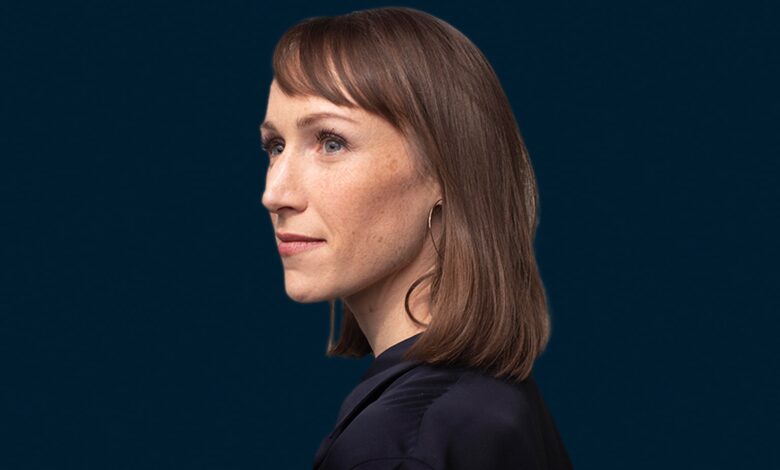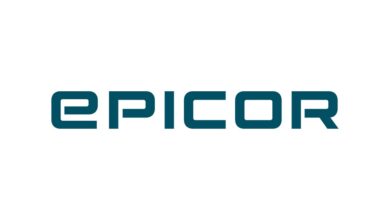Alex Hardiman on products outside pure technology companies

In this episode of McKinsey on Building Products, a podcast dedicated to the exploration of software product management and engineering, McKinsey partner Rikki Singh speaks to Alex Hardiman, chief product officer of the New York Times. In this conversation, Singh and Hardiman discuss how nontechnology companies can use a product-led strategy to build outstanding products and how product managers (PMs) can help drive the mission of any company by rallying toward a common goal, leveraging cross-functional teams, and adopting product-thinking principles at the core of the organization. An edited version of their conversation follows.
Product management in nontechnology companies
Rikki Singh: How do you approach product management at a journalism company, and how is this approach different than that of a classic tech company?
Alex Hardiman: There’s a ton of variety and diversity when it comes to thinking about product management outside of big tech. In the context of a journalism company that has a direct-to-consumer [D2C] subscription business, four key themes emerged when I was comparing and contrasting product management at tech and nontech companies.
The first is the idea of ambition and impact. At the Times, we’re very impact-driven, but we’re also incredibly purpose-driven. We’re optimizing for a strong business and an informed democracy at a time when facts are compromised, and we want to help people make sense of a complicated world.
The second big theme is the idea of customer focus. Great product managers, regardless of their company or their industry, know their customers, markets, and the business. Product managers at the Times also need to know the craft of journalism. In addition to building products for consumers and subscribers, we also build creative tools for our nearly 2,000 journalists.
The third theme is core product skills, which is a commonality between tech and nontech companies. A lot of the skills that make PMs successful in tech companies—such as strong product sense, excellent execution, leadership, and drive—are just as relevant in other companies with an established product practice. Our most magical products are born from a place of deep creativity because PMs at the Times understand how to perfectly blend art and science. They balance expert editorial judgment with deep datasets and the right customer insights. Our PMs come from a diverse range of backgrounds and disciplines, which is different from many tech companies.
The last theme is related to how we work. PMs at the Times work across the full stack of the product. The Times owns original content, the software attached to that content that makes it more valuable to people, and the distribution of that software and that product suite. That feature is different from social media apps, which control the software and distribution but not the content. At the Times, we’ve brought content and product lovers together. We have editors embedded in teams who are more product-minded, and we have product managers who are more editorially minded.
Rikki Singh: How has the Times built a vision around the products it builds?
Alex Hardiman:At the Times, the strength of our mission—to seek the truth and help people understand the world—fuels our ambition. We have been around for more than 170 years. The Times has succeeded by embracing change and growth. In the 1850s, we were a local newspaper, and today, we’re a modern D2C subscription company. Our product has been a central force behind that progress, and product managers are really paving the way.
Another signal of product and product-driven growth becoming more central to the success of nontech companies is the increasing importance of product vision and product strategy. For example, at the Times, we recently introduced a new product vision to rally the entire company. Our vision is to become the essential subscription for every curious English-speaking person who is seeking to understand and engage with the world. Our audience contains a total addressable market of about 135 million people around the world who are open to paying for the type of journalism-based products we make. We invest in a portfolio of products because they appeal to many of our readers’ top interest areas. We started with our news product, which is our largest, and then added other products, including games, cooking, the Athletic, and Wirecutter. They’re all prioritized within our strategy because they leverage unique competitive advantages in the news space that the New York Times has honed over the past couple of decades.
Product vision might not come naturally to some companies outside of tech, but it’s one of the most useful tools to help any company inspire, align, and rally teams toward a common purpose and a common goal. When nontech companies have a clear understanding of their customers, market, and offerings, they can easily pursue real product-driven growth at scale. I’m optimistic about the value and impact PMs can bring to nontech companies. I think product functions will become more understood and sought-after in nontech contexts over the next several years.
Integrating product management practices into an editorial-driven business
Rikki Singh: What is the “mission leader” responsible for?
Alex Hardiman: The mission leader is like the general manager of an area. Their responsibilities are setting the strategy and OKRs [objective and key results] for the cross-functional team, prioritizing the road map, and being accountable for the results. Depending on what the mission leader is responsible for, they could come from a couple of different functions. For instance, if you’re the mission lead for cooking, you need excellent consumer product experience. So the people overseeing that type of role tend to come from the product discipline. If you’re the mission lead of data platforms, you’ll most likely be a leader who has deep technical experience or an engineering background.
Rikki Singh: What metrics do teams use to measure their success?
Alex Hardiman: When we set our strategy at the enterprise level, we have some broad goals that we want to reach. For instance, from an audience perspective, we measure weekly active users. In terms of subscribers and subscriptions, we measure how many new subscriptions we are adding over a given period. These are metrics that we then report in our earnings because we’re a publicly traded company.
Teams have different metrics, called indicator metrics. If you work on newsletters, for example, your metric might be hitting a target number of subscribers for a given email. That email ties directly to our weekly active-user and subscriber-engagement numbers, so it’s important. Teams are responsible for metrics that they can directly move, and we make sure we can track the movement of those team-level metrics against our enterprise goals.
Rikki Singh: The news is the product that journalists are bringing in, so the news can be considered part of the product, too. How does the newsroom coordinate with the PMs?
Alex Hardiman: We have journalists and editors who are embedded into our cross-functional teams. When we think about our strategy and goals, we understand the needs of the journalists and editors, they understand what we’re trying to create from a business value perspective, and we meet in the middle. Where the journalism is the product, you can’t separate the two.
Here’s a recent example. A journalist wanted to get more reporter voices in the mix. The people who are on the ground in Ukraine don’t necessarily have time to write a fully reported story, but they have incredible observations and insights that they wanted to get in front of our readers. That’s how we came up with reporter updates, which are highly curated short-form posts from credible reporters. Eventually, editors become more product-minded and product managers become more editorial-minded.
Effective cross-functional collaboration through a product-led mindset
Rikki Singh: How do you stay inclusive without making the team too big to function?
Alex Hardiman: We try to maintain a good ratio. So we determine what the right ratio would look like for product management in design, data science, engineering, and editorial. We usually have one or two editors who are embedded, so we try to stay nimble. A cross-functional team might be no more than eight to ten people. There’s a sense of ownership and accountability because the news cycle creates a metabolism in which things move fast, and PMs and engineers want to catch up.
Rikki Singh: How did you decide on the artifacts or frameworks you wanted to use in your product-management practice?
Alex Hardiman: For us, it came down to the simplicity and clarity of the message. It’s important for us to not get hung up on jargon and process: we prefer to say what we mean, be clear, and make it actionable. Our product vision and strategy are rooted in deep market and industry analysis, data and analytics, customer insights, and internal judgment and vision. But we made sure that it was tight and succinct so employees in all disciplines understand it and their role in it.
We similarly spent a good amount of time testing the utility of the framework with a couple of different teams and tweaking it to be more intuitive and simpler. We tried to encourage people to empathize with the problems to solve. We also tried to make sure that we didn’t get lost in too many data sets and that we focused only on the important ones. The more we can help teams tie their team-level indicator metrics back to the enterprise-level goals, the more they can more easily prioritize tasks, feel like they’re optimizing for impact, and stay on the right track.
Rikki Singh: In that setup, how does anchoring on the product vision so heavily inform how a PM would make trade-offs? For example, a PM might have to balance creating a great consumer experience and implementing digital advertising.
Alex Hardiman: If you’re working on digital advertising, you have a different mission. Your job is to create premium advertising experiences that leverage the first-party data from our subscription business and scale that across the entire bundle of our products. You want to make sure that a new ad experience does no harm to the consumer experience; ideally, it enhances it. If there is conflict, it shouldn’t take place for an individual PM, but you might find that a team gets too big and has too many priorities. That’s a good moment to gut check what their mandate is. What are their goals? What needs to be restructured? How can people focus better on one or two tasks—and succeed at them?
Rikki Singh: When conflict arises, who helps to resolve it?
Alex Hardiman: It tends to be me, my colleagues, our CTO [chief technology officer], and our chief growth officer. We own a common set of enterprise metrics together. There are moments when teams need to make trade-offs, but we’ve created a healthy escalation practice: teams lay out the pros and cons, and we make the responsible decision for the business together. That way, everybody has shared context. That sort of problem solving should feel like a healthy thing to do rather than a struggle.
Rikki Singh: How have you seen the Times reconcile the “content as king” mentality and editorial-driven infrastructure with the need for product-led innovation?
Alex Hardiman: A while ago, there might have been a bit of tension between those two areas. Now, the shared view is that a product under the New York Times brand must first and foremost have the best journalism and the best content. It’s hard for us to build something that’s part of our DNA if it doesn’t start with that. PMs must ensure the editorial offerings we have appeal to specific consumer needs, are discoverable, are useful, and solve a problem.
With cooking, for instance, we have editors who understand the market and can think about consumers’ needs when commissioning recipes. They work together with product managers to help improve search, recommendations, and the journey someone takes when they’re cooking, including how they save recipes and create grocery lists. There are many ways to think about the utility we can add on top of the content we create.
So journalists and editors create the best coverage and product managers help them unlock the value and the utility for consumers. When those two come together, that’s where great ideas get created.
Product management’s influential role in transforming organizations
Rikki Singh: If you’re part of a nonproduct company that is starting on this transformation journey, what can a PM do to be part of the broader transformation or accelerate it?
Alex Hardiman: When product managers walk into that type of context, they already have the skills they need; they just have to apply them in a different way. They should treat internal culture change the same way they would treat a piece of software that they want to ship externally. Start by empathizing with the organization to understand the pain points and the problem the product is trying to solve. As soon as you do that, it’s easy to figure out where the product can help. And a clear narrative helps rally the rest of the team.
For example, when we pivoted from print to mobile, I described how the newsroom could scale its journalism, which helped create change. For journalists, being on the front page of the newspaper was historically the most remarkable accomplishment—that’s what they strived for. When we went through the data, we found that a push notification for stories on our app reached four times the audience engagement compared to being on the front page. It’s not about being on the front page of the newspaper; what’s important is making sure your story finds its widest audience. That’s where the product side can help.
Approaching product ideas with care and empathy is important. It’s also important to test to learn and be resilient. At times, there may be some confusion or pushback, but if you help connect the dots between what the company needs and where products can drive tremendous impact and value, you can help people understand the importance of it.
Rikki Singh: How can a PM approach this if leadership is from a nondigital background?
Alex Hardiman: If you’re a CEO of a company, even if you don’t understand product, you want to be successful and you want to win. A product manager can seek to understand the market, what success looks like, and the strategy needed to get there. If they apply product thinking—even if they don’t use the word “product”—they can help show the impact of what PMs do as a discipline. The best PMs roll up their sleeves and try it. Seeing the change happen can turn people who might be confused or detractors into true advocates. It can take time.
Rikki Singh: You talked about how everyone has their missions. What is the cadence at which missions get assigned and OKR are reviewed?
Alex Hardiman: Once a year during Q4, we look ahead to determine our strategy and top goals at an enterprise level, and if we have the right investments in place. We put all those pieces together, and every six months the product leadership team develops a clear one-pager that discusses the most important goals based on the broader plan. We plan the next six months and the OKRs, and we decide what success would look like. We use the one-pager to kick off our planning process, and the mission leads use it to build their own OKRs.
We use alignment sessions to make sure teams’ priorities aren’t in conflict with each other. The six-month time horizon allows us to set and complete ambitious targets. The outcome is what matters. We let the teams define the ways they will drive those outcomes.
Rikki Singh: What does the one-pager contain?
Alex Hardiman: In plain terms, it explains our vision, strategy, audience, the most important bets we need to make, and the way we will measure success. Simplicity is important because it removes ambiguity. It helps align teams around the things that matter most and, in a healthy way, expose where there’s misalignment or tension so we can practically work through it with our teams.
Rikki Singh: What’s one final thought about product management outside of tech companies that you would leave the audience with?
Alex Hardiman: Product and product thinking have never been more important than they are now. Product management skills can be applied to address many problems. More companies are appreciative and understand the value of product thinking. I think this is an incredible field to be a part of, and there’s so much opportunity to do good.



